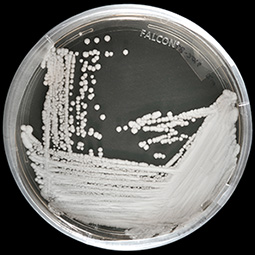New drug formulation could treat Candida infections
With antimicrobial resistance (AMR) increasing around the world, new research led by the University of Bristol has shown a new drug formulation could possibly be used in antifungal treatments against Candida infections.
Candida albicans, a well-known yeast usually seen in the mouth, skin, gut and vagina, is reported to form biofilms and cause mild to life threatening infections. Fluconazole, an antifungal drug widely used to treat Candida infections is completely ineffective in treating Candida biofilms and new drugs are needed to treat them. However, unlike antibiotics, developing antifungal drugs is very challenging because yeast cells are structurally similar to human cells, as a result, there is a greater chance of unwanted side effects with new antifungal drugs. A better alternative would be to improve the efficiency of currently approved antifungal drugs such as fluconazole but with minimal side effects.
Recent studies have shown that microorganisms can communicate with each other using various chemical signals. Some microorganisms use these signals to control other competing microorganisms and these signals could potentially be used as antimicrobial drugs.
AMR NEWS
Your Biweekly Source for Global AMR Insights!
Stay informed with the essential newsletter that brings together all the latest One Health news on antimicrobial resistance. Delivered straight to your inbox every two weeks, AMR NEWS provides a curated selection of international insights, key publications, and the latest updates in the fight against AMR.
Don’t miss out on staying ahead in the global AMR movement—subscribe now!







